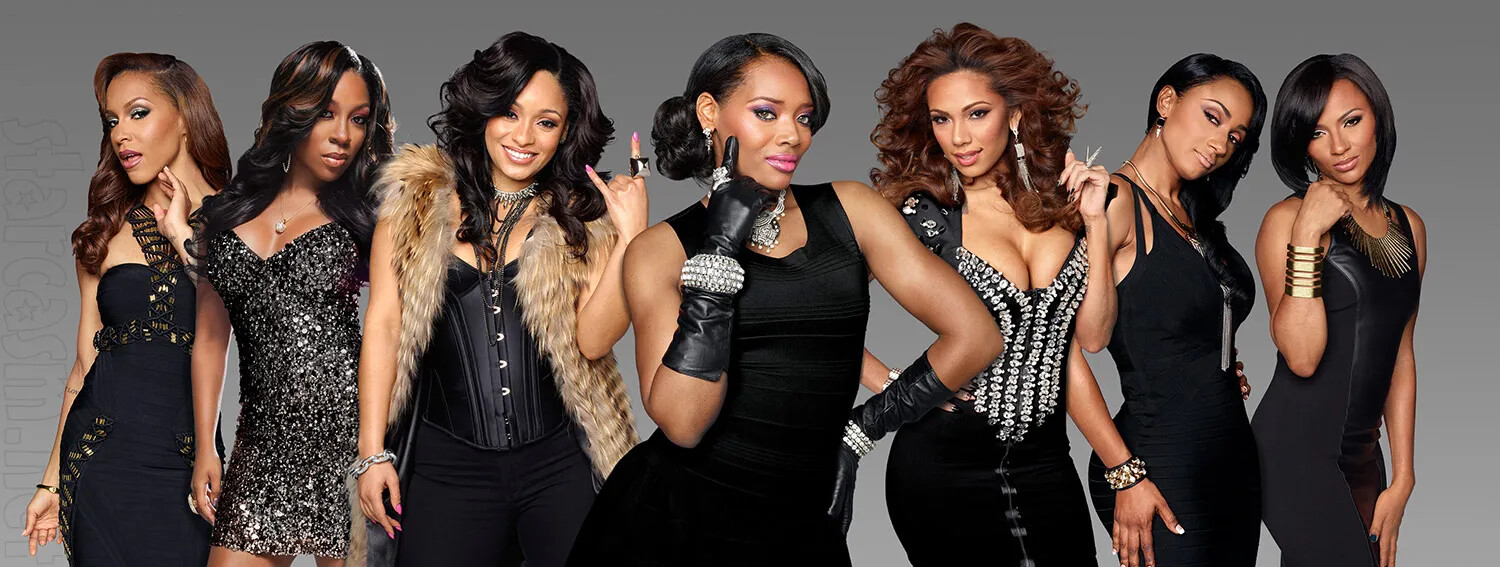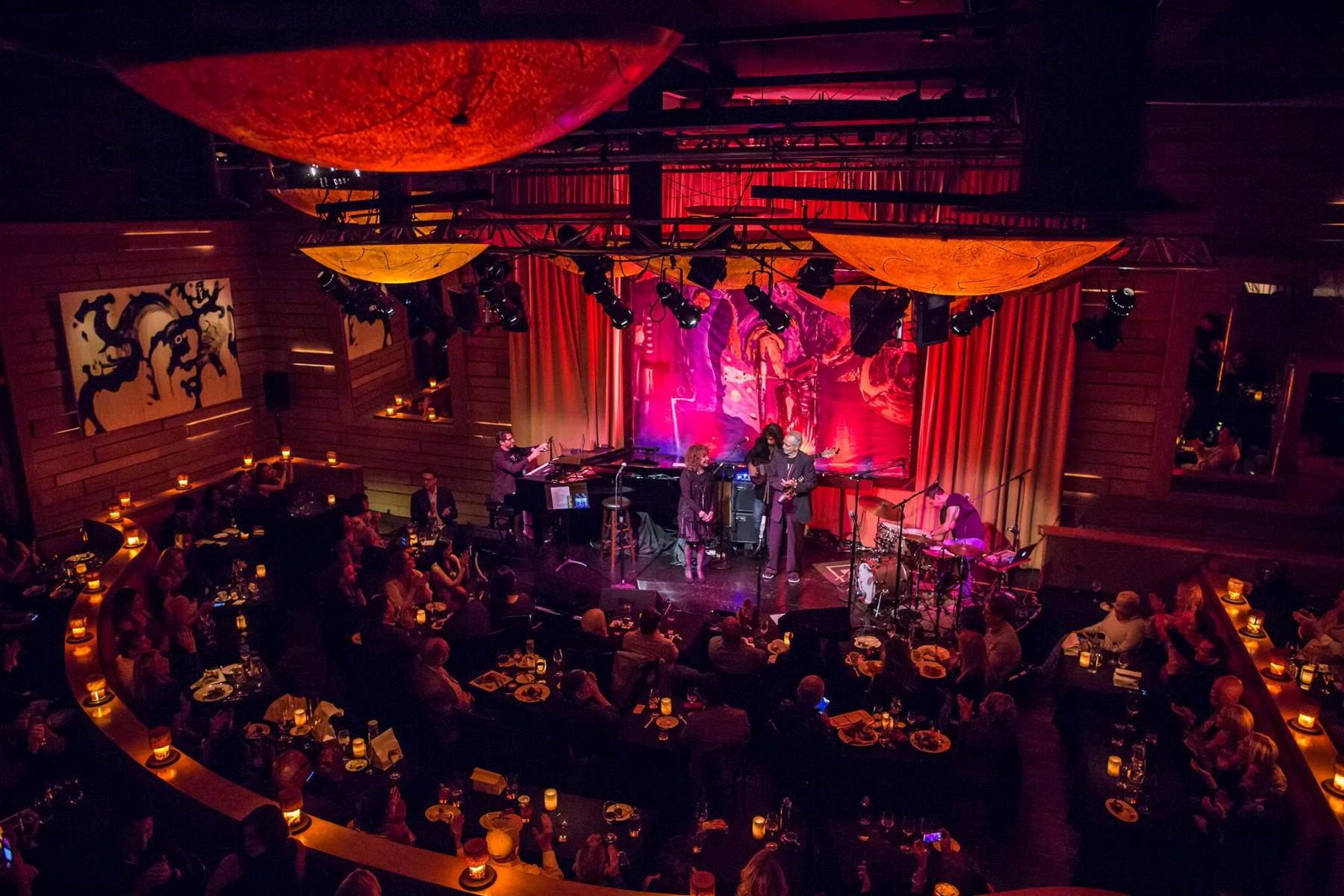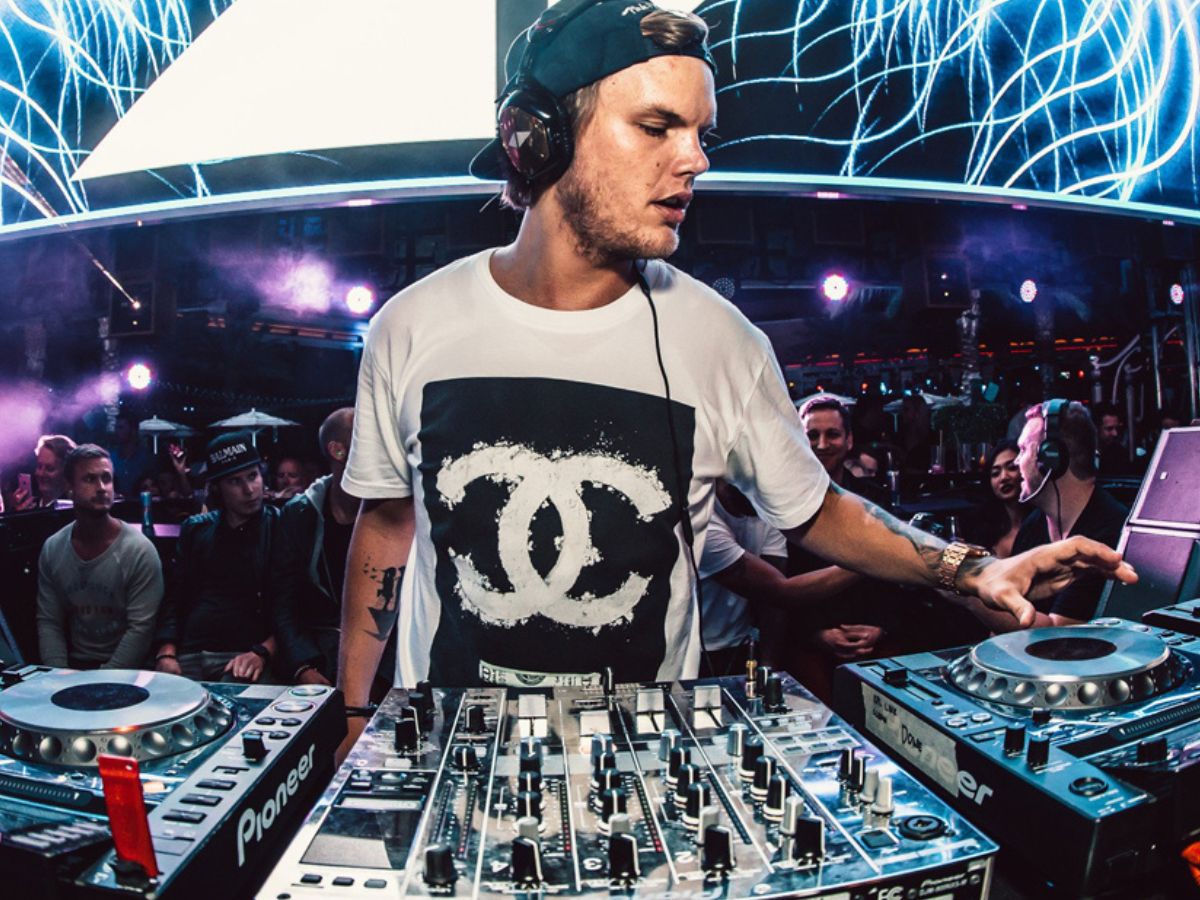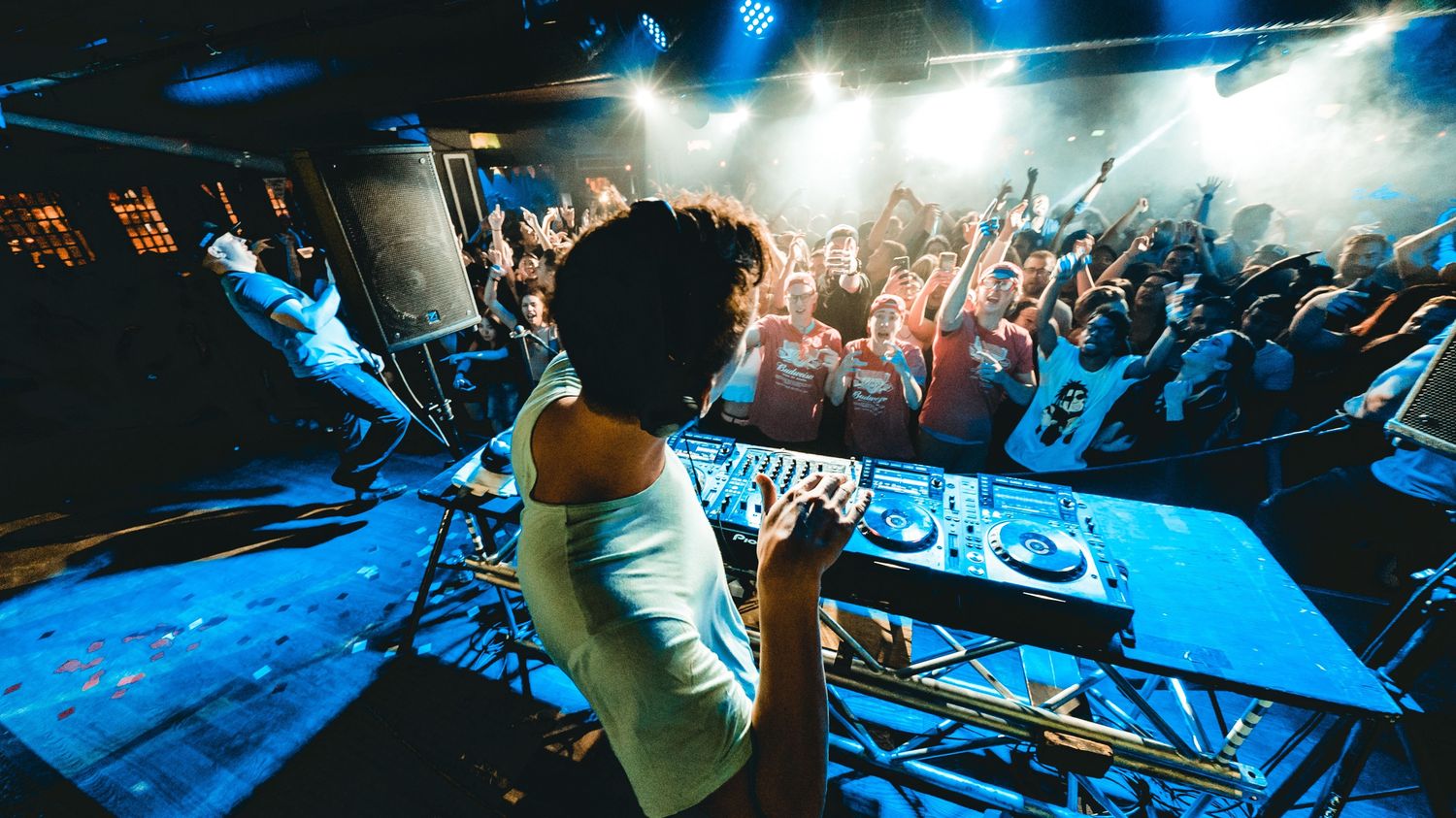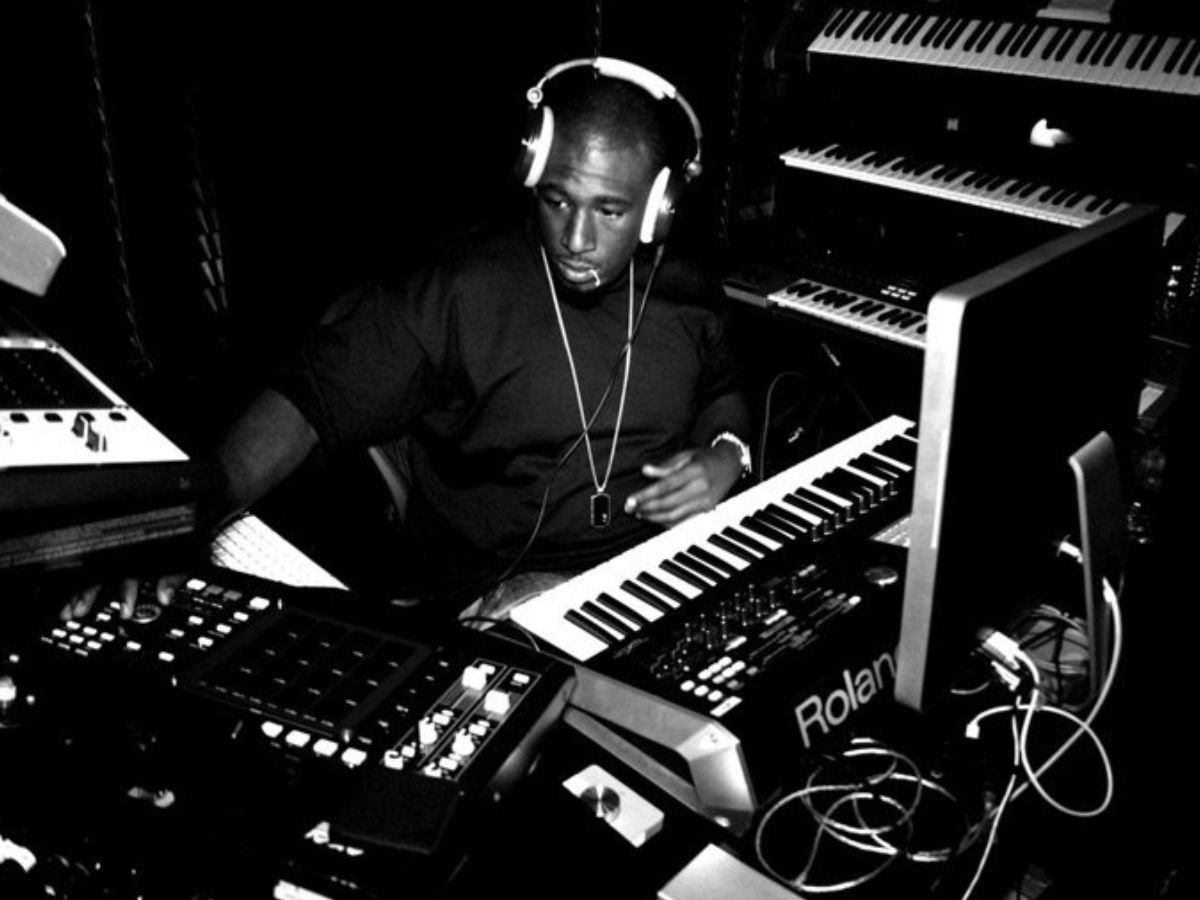

Hip Hop
How To Dance To Hip Hop In The Club
Modified: January 22, 2024
Learn how to dance to hip hop in the club with our step-by-step guide. Master the latest moves and impress everyone on the dance floor with your hip hop skills.
(Many of the links in this article redirect to a specific reviewed product. Your purchase of these products through affiliate links helps to generate commission for AudioLover.com, at no extra cost. Learn more)
Table of Contents
Introduction
When it comes to dancing, few genres are as energetic, rhythmic, and culturally influential as hip hop. From its roots in the Bronx in the 1970s to its global domination today, hip hop has evolved into a dynamic and expressive form of art and self-expression. With its infectious beats, intricate footwork, and unique style, hip hop dancing has become a staple in clubs around the world.
However, if you’re new to hip hop or simply want to improve your skills, the thought of dancing to hip hop in a club can be daunting. You may wonder how to fit in, what moves to do, and how to exude the right attitude. But fear not – this comprehensive guide will show you everything you need to know about dancing to hip hop in the club.
Whether you’re a seasoned dancer looking to expand your repertoire or a beginner eager to make a splash on the dance floor, this guide will break down the essential steps, techniques, and tips to help you shine. From finding the right club to mastering the iconic moves, we’ve got you covered.
So, get ready to turn up the volume, let loose, and groove to the infectious beats of hip hop. It’s time to unleash your inner dancer and make a lasting impression on the dance floor!
Finding the Right Club
Choosing the right club is crucial when it comes to dancing to hip hop. Not all clubs have the same vibe or play the kind of music you want to dance to. Here are some tips for finding the perfect hip hop club:
- Research local clubs: Start by researching clubs in your area that are known for playing hip hop music. Look for clubs that have a reputation for a lively and energetic atmosphere, as these are likely to attract dancers who are passionate about hip hop.
- Check club websites and social media: Visit the websites and social media pages of the clubs you’re interested in. Look for any information about the type of music they play, the dress code, and the general crowd that frequents the club. This will give you a good idea of whether the club aligns with your preferences.
- Ask for recommendations: Reach out to friends or fellow dancers who are familiar with the local hip hop scene. They may have recommendations for hip hop clubs that cater to dancers and offer a welcoming environment.
- Visit the club on a non-busy night: If possible, visit the club on a less crowded night before committing to spending an entire evening there. This will give you a chance to assess the atmosphere, observe the crowd, and determine if it’s the right fit for your style of dancing.
- Consider the dance floor: Take note of the size and layout of the dance floor. A spacious and well-maintained dance floor is ideal for executing your moves and giving you the freedom to express yourself without feeling cramped.
Remember, finding the right club is not only about the music but also the overall environment and crowd. Look for a club where you feel comfortable and can connect with other dancers who share your passion for hip hop.
Dressing for Success
When it comes to dancing to hip hop in the club, your outfit can make a big impact. Your attire not only reflects your personal style but also contributes to the overall vibe of the dance floor. Here are some tips for dressing for success:
- Embrace the Hip Hop Aesthetic: Hip hop fashion is all about self-expression and individuality. Opt for streetwear-inspired clothing such as graphic tees, baggy jeans or joggers, sneakers, and snapback hats. Incorporate bold colors, patterns, and accessories to make a statement.
- Choose Comfortable Clothes: Since hip hop dancing involves a lot of movement, it’s important to wear clothes that allow you to move freely. Opt for breathable fabrics and avoid restrictive clothing that may hinder your dance moves.
- Pay Attention to Footwear: Your choice of footwear can greatly impact your dancing experience. Opt for comfortable and supportive sneakers that provide cushioning and grip. Avoid heels or shoes with slippery soles, as they can be unsafe and make it difficult to execute hip hop moves.
- Accessorize: Add some flair to your outfit with accessories such as chains, oversized sunglasses, hats, or statement jewelry. These small touches can elevate your look and add to the hip hop aesthetic.
- Express Your Individuality: Hip hop is all about self-expression, so don’t be afraid to showcase your unique style. Whether it’s through a signature hairstyle, funky socks, or a personalized jacket, let your outfit reflect your personality and creativity.
Remember, the key to dressing for success in hip hop dancing is to feel confident and comfortable in your outfit. When you look the part, you’ll feel more in tune with the music and be ready to own the dance floor.
Understanding the Basics of Hip Hop
Before diving into the world of hip hop dancing, it’s important to have a solid understanding of its foundations and elements. Hip hop is more than just a genre of music – it’s a cultural movement that encompasses dance, music, fashion, and art. Here are the key elements you need to know:
- Street Dance Origins: Hip hop dance originated in the streets of New York City in the 1970s and was heavily influenced by a variety of dance styles such as breaking, popping, locking, and funk. It was a form of self-expression for marginalized communities, representing their struggles, dreams, and unique identities.
- Rhythm and Groove: Hip hop dancing is all about embracing the rhythm and groove of the music. It’s characterized by fluid, intricate movements that are in sync with the beat. It’s not just about memorizing choreography but allowing the music to guide your body and express yourself authentically.
- Freestyle Versatility: Unlike other dance styles that rely heavily on structured choreography, hip hop emphasizes individuality and improvisation. Freestyle dancing is a key element of hip hop, allowing dancers to showcase their personal style, creativity, and interpretation of the music.
- Isolations and Body Control: Hip hop involves isolating different body parts and controlling them independently. It focuses on precise movements of the chest, hips, arms, and legs, allowing dancers to create visually appealing and impactful sequences. Building body control through practice and exercises is essential to mastering hip hop moves.
- Expression and Attitude: Hip hop is not just about the physical movements – it’s also about the attitude and swag you bring to the dance floor. Confidence, authenticity, and individuality are key in hip hop. Embrace your unique style, facial expressions, and energy to truly connect with the music and captivate the audience.
By understanding the roots and essential elements of hip hop, you’ll have a solid foundation to build upon as you embark on your journey to becoming a skilled hip hop dancer.
Getting in the Groove: Warm-Up and Stretching
Before hitting the dance floor and showcasing your hip hop moves, it’s crucial to prepare your body by warming up and stretching. A proper warm-up not only helps prevent injuries but also enhances your performance and flexibility. Here’s a step-by-step guide to getting in the groove:
- Start with Cardio: Begin your warm-up routine with 5-10 minutes of light cardio exercises such as jogging, jumping jacks, or dancing in place. This helps increase your heart rate, blood flow, and body temperature.
- Joint Mobilization: Perform gentle movements to mobilize your joints, starting from your neck and working your way down to your ankles. Rotate your neck, roll your shoulders, and perform wrist and ankle circles to loosen up and increase mobility.
- Dynamic Stretches: Dynamic stretches involve moving through a range of motion rather than holding a static stretch. Perform leg swings, arm circles, torso twists, and hip rotations to warm up the major muscle groups used in hip hop dancing.
- Stretch Specific Muscles: After the dynamic stretches, focus on stretching key areas used in hip hop dancing such as your calves, quadriceps, hamstrings, hip flexors, and glutes. Hold each stretch for 20-30 seconds and breathe deeply, allowing your muscles to relax and lengthen.
- Warm-Up Moves: Incorporate some basic hip hop moves into your warm-up routine to get your body accustomed to the movements. Practice some simple footwork, body rolls, and isolations to activate the muscles and get in the groove.
- Hydration: Stay hydrated throughout your warm-up and throughout your dance session. Drink water before, during, and after your warm-up to ensure your body stays properly hydrated.
Remember, warming up and stretching are essential to prepare your body for the intensity of hip hop dancing. Take the time to properly warm up and stretch to enhance your performance, prevent injuries, and get your mind and body in sync with the rhythm of hip hop music.
Mastering the Hip Hop Moves
Once you’ve warmed up and got in the groove, it’s time to dive into mastering the iconic hip hop moves. These moves form the foundation of hip hop dancing and will help you express yourself with style and confidence. Here are some key moves to focus on:
- Basic Footwork: Footwork is a fundamental aspect of hip hop dancing. Practice different variations of steps such as the two-step, the shuffle, and the running man. Mastering these basic footwork patterns will provide a strong base for more complex moves.
- Isolations: Isolations involve moving specific body parts while keeping the rest of your body still. Practice isolating your head, shoulders, chest, hips, and arms. Focus on executing each movement with precision and control to create sharp and impactful visuals.
- Popping and Locking: Popping and locking are distinct styles of hip hop dancing. Popping involves quickly contracting and releasing your muscles to create sharp, explosive movements. Locking, on the other hand, involves freezing and holding a pose before transitioning to the next movement. Learn the techniques for popping and locking and incorporate them into your dance routine.
- Breaking Moves: Breaking, also known as breakdancing, is a dynamic and acrobatic style within hip hop culture. Learn foundational breaking moves such as toprock, downrock, power moves, and freezes. Breaking requires strength, agility, and practice, so start with basic moves and gradually progress to more advanced ones.
- Grooves and Musicality: Hip hop dancing is all about groove and musicality. Focus on feeling the rhythm and syncing your movements with the beat. Experiment with different grooves such as the bounce, the rock, and the sway. Pay attention to musical accents and syncopation to add texture and style to your dance.
Remember, mastering hip hop moves takes time and practice. Start with the basics and gradually build your repertoire. Watch videos of professional dancers for inspiration and study their techniques. Don’t be afraid to add your own flair and personal style to make the moves your own.
Nailing the Attitude
When it comes to hip hop dancing, nailing the attitude is just as important as mastering the moves. Your attitude and confidence on the dance floor can make a world of difference in your performance. Here are some tips to help you showcase the right attitude:
- Embrace Confidence: Confidence is key in hip hop dancing. Believe in yourself and your abilities. Own the dance floor with your presence and show that you’re in control. Remember, even if you make a mistake, keep going with confidence and style.
- Show Personality: Hip hop is a form of self-expression, so let your personality shine through. Be authentic and true to yourself. Incorporate your own style, flair, and unique moves into your dance routine. This will make your performance more memorable and captivating.
- Project Energy: Hip hop is a high-energy dance style, so bring the energy to the dance floor. Show enthusiasm, passion, and excitement in your movements. Use your body language, facial expressions, and gestures to exude energy and capture the attention of the audience.
- Be Fearless: Hip hop is all about stepping out of your comfort zone and pushing boundaries. Don’t be afraid to take risks and try new things. Experiment with different moves, variations, and styles. Embrace challenges and embrace the opportunity to grow as a dancer.
- Engage with the Music: A crucial part of nailing the attitude in hip hop dancing is fully connecting with the music. Listen to the lyrics, feel the beats, and let the music inspire your movements. Allow the music to guide the emotions you convey through your dance. This connection will bring a whole new level of authenticity to your performance.
Remember, attitude is a crucial element in hip hop dancing. Confidence, personality, energy, fearlessness, and connection with the music will help you stand out on the dance floor and leave a lasting impression on the audience.
Dancing with a Partner
While hip hop dancing is often associated with freestyle and individual movements, dancing with a partner can add a dynamic and exciting element to your performance. Whether it’s a choreographed routine or an impromptu collaboration, here are some tips for dancing with a partner in hip hop:
- Communication and Connection: Communication is key when dancing with a partner. Establish clear signals and cues to indicate transitions, movements, and timing. Maintain eye contact and stay attuned to each other’s energy and body language to create a strong connection on the dance floor.
- Synchronization: Work on synchronizing your movements with your partner. Practice mirroring each other’s steps, timing, and dynamics. This will create a visually pleasing and seamless performance, where your movements blend together effortlessly.
- Trust and Support: Trust is an essential element of partner dancing. Build trust with your partner through practice, rehearsals, and open communication. Support each other’s ideas, take turns leading and following, and be responsive to each other’s movements to create a harmonious dance partnership.
- Partner Work and Lifts: Explore partner work and lifts to add excitement and variety to your routine. Start with simple partner moves such as handholds, spins, and dips. Gradually progress to more advanced lifts, ensuring the safety and comfort of both you and your partner at all times.
- Chemistry and Performance: Develop chemistry with your partner to enhance the overall performance. Connect with each other emotionally and tell a story through your dance. Showcasing genuine chemistry and expressive interactions will captivate the audience and create a memorable experience.
- Collaboration and Creativity: Partner dancing in hip hop allows for collaborative creativity. Encourage your partner to contribute their ideas, movements, and style to the routine. Embrace the opportunity to blend your individual strengths and create something unique and visually captivating.
Remember, dancing with a partner in hip hop is a collaborative experience. Cultivate trust, synchronization, and communication to create a dynamic and enjoyable performance that showcases your skills and connection as a dance duo.
Commanding the Dance Floor
When it comes to hip hop dancing, commanding the dance floor is about exuding confidence, creativity, and a strong stage presence. It’s about captivating the audience and leaving a lasting impression. Here are some tips to help you command the dance floor:
- Own the Space: Occupy and own the dance floor. Utilize the entire space and make your presence known. Move with purpose and intention, filling the stage with your energy and movements. Use the space to express your creativity and showcase your style.
- Energy and Showmanship: Bring your energy levels up and perform with showmanship. Engage the audience with dynamic movements, jumps, and explosive choreography. Use facial expressions, gestures, and body language to connect with the crowd and draw them into your performance.
- Tell a Story: Every great performance has a story to tell. Use your movements and expressions to convey emotions and tell a narrative through your dance. Thoughtfully plan the progression of your routine to create a compelling and engaging storyline that resonates with the audience.
- Commanding Moves: Showcase commanding and impactful moves that grab attention. Master powerful and visually striking techniques such as power moves, freezes, and intricate footwork patterns. Execute these moves with precision, control, and confidence to truly command the dance floor.
- Interact with the Audience: Engage with the audience during your performance. Make eye contact, acknowledge their presence, and involve them in your dance. Encourage participation by inviting cheers, claps, or call-and-response moments. This interaction creates a vibrant and interactive atmosphere.
- Adapt to the Music: Pay close attention to the music and let it dictate the flow of your performance. Be responsive to the musical accents, rhythms, and changes. Adapt your movements and style to match the energy and vibe of the music, creating a seamless connection between your dance and the sound.
Remember, commanding the dance floor is about stepping into the spotlight and owning your performance. Embrace confidence, energy, creativity, and audience engagement to captivate and leave a lasting impression on both the dance floor and the minds of those watching.
Taking Breaks and Hydrating
When it comes to hip hop dancing, it’s important to prioritize your body’s needs and take breaks to rest and hydrate. Dancing can be physically demanding, and proper self-care is crucial to maintain stamina and prevent injuries. Here are some tips on taking breaks and staying hydrated during your dance sessions:
- Listen to Your Body: Pay attention to your body’s signals. If you start feeling fatigued, out of breath, or experience any discomfort, it’s a sign that you need to take a break. Pushing through exhaustion can lead to overexertion and injuries.
- Plan Breaks Strategically: Plan your dance routine or freestyle sessions with planned breaks. Incorporate short pauses between intense segments to catch your breath and relax. This allows your muscles to recover and helps replenish your energy levels.
- Hydrate Regularly: Stay hydrated before, during, and after your dance sessions. Bring a water bottle with you and take sips of water during your breaks. Drinking water helps replenish fluids lost through sweating and keeps your body functioning optimally.
- Choose Replenishing Drinks: In addition to water, consider replenishing electrolytes during longer dance sessions. Electrolyte-enhanced drinks or coconut water can help restore balance to your body and prevent dehydration.
- Stretch and Relax During Breaks: Use your breaks as an opportunity to stretch your muscles and release any tension. Perform gentle stretches to prevent muscle tightness and improve flexibility. You can also take moments to sit down, breathe deeply, and relax your body and mind.
- Pace Yourself: Don’t push yourself to the point of exhaustion without taking breaks. Pace yourself throughout your dance session to maintain your energy levels. Allow yourself to build stamina gradually and listen to your body’s limits.
Remember, taking breaks and staying hydrated is essential for both your well-being and dance performance. By incorporating strategic breaks and staying properly hydrated, you’ll be able to dance for longer, reduce the risk of injuries, and enjoy your hip hop sessions to the fullest.
Conclusion
Dancing to hip hop in the club is an exhilarating and dynamic experience that allows you to express yourself, connect with the music, and captivate the audience. Through this comprehensive guide, we have covered everything you need to know to navigate the world of hip hop dancing with confidence and skill.
From finding the right club to dressing for success, understanding the basics, and mastering the iconic moves, you now have the tools to step onto the dance floor with style and flair. Remember to embrace the attitude, connect with your partner if dancing together, and command the dance floor with confidence, creativity, and a strong stage presence.
However, it’s important to never forget the value of self-care. Take breaks when needed, stay hydrated, and listen to your body to ensure your well-being and prevent injuries. By taking care of yourself, you can continue to enjoy the thrill of hip hop dancing for years to come.
So, put on your favorite hip hop tracks, embrace the rhythm, and let your body move to the infectious beats. With practice, passion, and a touch of creativity, you’ll become a mesmerizing hip hop dancer who leaves an indelible impression on the dance floor.

